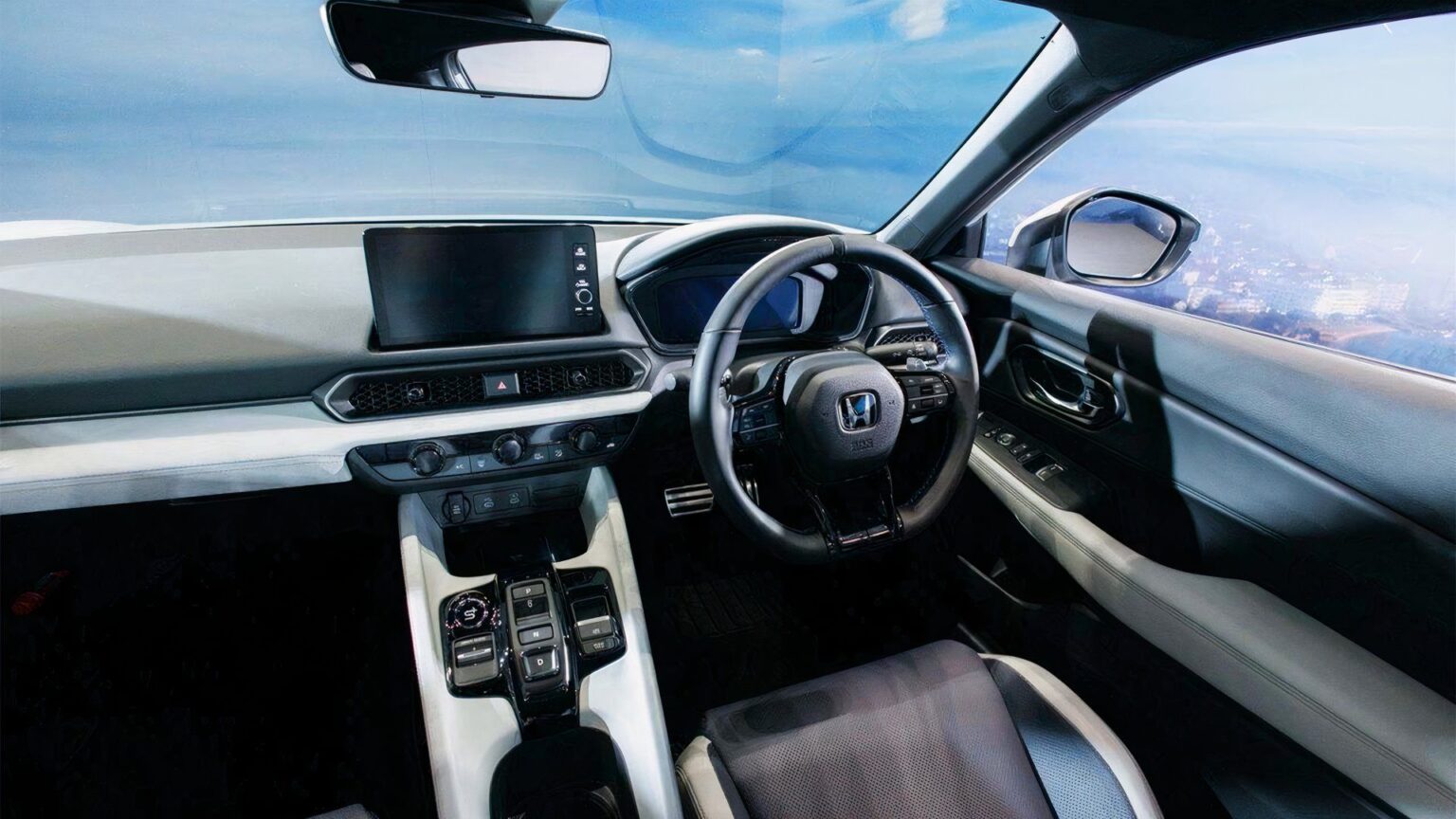Honda recently revealed the near-production-ready interior of the hotly anticipated Prelude revival at an event in Japan, giving the world its best look yet. The Japanese automaker showcased the latest prototype with a completed interior during a press event on its home turf, prior to its official placement at the Formula One Japanese Grand Prix at Suzuka Circuit this weekend. Before this, Honda only previewed the vehicle’s interior as well as minor technical details, all to tease what lies ahead.
The return of the Prelude for 2026 marks a huge moment for the Tokyo-based carmaker as it’ll be 25 years since Honda last produced the sports car. The last Prelude ever made was the fifth-generation version, which ended production way back in 2001. Since then, fans have been clamoring for its revival and now, they’re getting just that.
The New Honda Prelude’s Interior Prioritizes “Hands-On Feel”
Honda has always been known to make proper driver’s cars and the latest and greatest Prelude seeks to epitomize that. According to multiple reports from automotive reporters present during Honda’s event, the automaker is apparently prioritizing a “hands-on feel,” all to promote driver involvement.
But if the interior rings bells of familiarity, it’s because the new Prelude takes heavy inspiration from the Civic Hybrid from which it’s heavily based on. From the pictures, the dashboard, main center console where the HVAC controls, the trapezoidal vents, and the protruding infotainment screen all look to be taken from the Civic Hybrid. But the Prelude seems to utilize slightly more upscale materials, judging by the color and the texture of the dashboard, and even the seats.
We can also see what appear to be very supportive front bucket sport seats with aggressive seatback side bolsters. They also look to sit very low and close to the floor, compensating for the low-slung roof while emphasizing a low center of gravity for handling.
The center console also rises high and at an angle for easy reach for the driver, which, like on other Honda and even Acura models, houses the Prelude’s touch-button transmission selector, the car’s drive mode selector and sport button. The driver’s also treated to a fully digital gauge cluster.
“We are now entering an era of carbon neutrality and full-scale electrification. I think some people also have an image of heritage in the name Prelude. However, rather than rehashing something stuck in the past, we have aimed to provide a sustainable next-generation FUN that is unique to Honda by learning and inheriting the good points of previous models and challenging ourselves to evolve them in a way that is appropriate for the modern age,” the Prelude’s lead development manager, Tomoyuki Yamagami, told Japan’s CarWatch. Yamagami was also responsible for the development of the current 11th-generation Civic’s e:HEV gas-electric hybrid model.
“I wanted to balance the two opposing themes of this glider, the comfort that makes you want to go anywhere, and the excitement of something out of the ordinary, at a high level, so instead of being trapped by the ‘helicage,’ I’m going to take on various challenges. It’s smooth, clean, and ‘intelligent,’ but this time it’s equipped with a technology called S+Shift, so you can enjoy it like ‘rock and roll’ at times,” Yamagami continued, speaking about the Prelude’s interior.
“And while it’s a ‘specialty’ that allows you to spend special time with your loved ones, it also has the versatility to be exhilarating even when riding alone. There are parts that incorporate current trends, but it’s not right to be too swept away by them. I think that striking such a balance is important in today’s age.”
The production Prelude is anticipated to arrive later this year for the 2026 model-year, sporting a modified version of the Civic Hybrid’s powertrain.
TopSpeed’s Take
The new 2026 Honda Prelude is one of the automaker’s most anticipated new-car launches in a long time. The Prelude has always been an iconic nameplate and model for the Big H and its revival for 2026 marks its return after a 25-year hiatus. Japanese sports cars seemed to disappear and die off in the 2000s and 2010s after the 2008 global financial crisis nearly rendered sports car demand obsolete. But now, sports cars are back in demand and that has the Japanese sports car wars heating back up and reviving the old glory days.
Read the full article here


